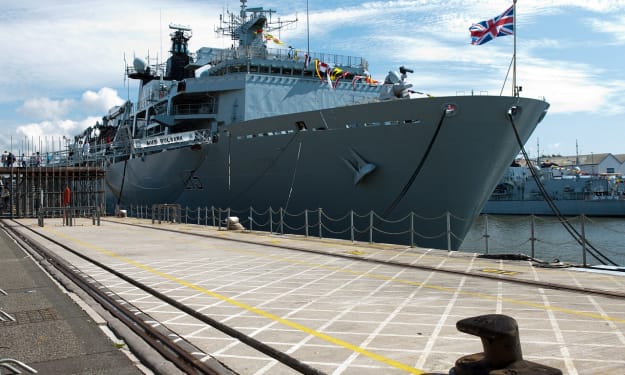How Did 'Left And Right' Become 'Port And Starboard' At Sea?
And why the red and green lights, too?

Have you ever wondered where the terms ‘Port’ and ‘Starboard’ came from and how we came to use them to mean left and right at sea?
The people collectively called ‘Norse’ or ‘Vikings’ (roughly, people from modern-day Denmark and Norway) were accomplished seafarers and the dominant people at sea in Europe in the Viking Age, about 900–1200 AD.
Predominantly wind-powered (but with optional oars), the Viking ships also had a steering oar attached which they fastened to the right-hand side at the rear of the vessel.
This design seems to have been followed by everyone, as the majority of people are right-handed.
The National Ocean Service, a unit of the US Department of Commerce, report that ‘in the early days of boating before ships had rudders on their centrelines, sailors controlled their boats using a steering oar. Most sailors were right-handed, so they placed the steering oar over or through the right side of the stern. Sailors began calling the right side the steering side, which soon became “starboard” by combining two Old English words: stéor (meaning “steer”) and bord (meaning “the side of a boat”).
With a ‘steer board’ attached, tying up with the right-hand side to the bank or quay or jetty would be very difficult, so ships routinely tied up with the left-hand side against the shore. Wikipedia says “Since the steering oar was on the right side of the boat, it would tie up at the wharf on the other side. Hence the left side was called port” (Oxford English Dictionary reports port in use in this way in the mid 16th century). Formerly, sailors often used larboard instead of port. Wikipedia further explains that this is “from Middle English ladebord, and the term lade is related to the modern load. You put a plank or board to get to from dock to ship, called a ‘loading board’ or ‘landboard’ or ‘larboard’.” Again, over time, this became the larboard side, so the right was starboard and the left, the larboard side.
Starboard and larboard were still the terms in everyday use into the 19th century. Royal Museums Greenwich suggests that the British Admiralty were concerned about the potential for confusion from sailors mixing up these similar-sounding words. There was an Admiralty Order to the Royal Navy in 1848 that the left-hand side was to be called ‘Port’ and the American Navy followed suit two years later.
In the middle of the 19th century, maritime nations created further instructions on signals and the US and British governments updated guidance. The USA and Britain agreed that ships must show a green light to the starboard side of the vessel (the right-hand side) and a red light to the left. If a boat is coming towards you at night, you should see both lamps, and the green will be on your left and the red on your right. If the ship is moving away from you, you will see only white light. Within a dozen or so years, most of the shipping in the world adopted this guidance. Authorities later incorporated the rules into the International Regulations for Preventing Collisions At Sea.
In this way, the terms and the colours were adopted universally.
About the Creator
Andy Killoran
British guy, recently retired so finally with time to read what I want and write when I want. Interested in almost everything, except maybe soccer and fishing. And golf. Oscar Wilde said golf ‘ruined a perfectly good walk’.
Enjoyed the story? Support the Creator.
Subscribe for free to receive all their stories in your feed. You could also pledge your support or give them a one-off tip, letting them know you appreciate their work.






Comments
There are no comments for this story
Be the first to respond and start the conversation.